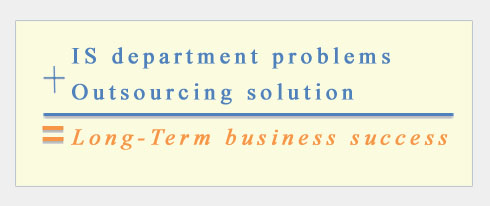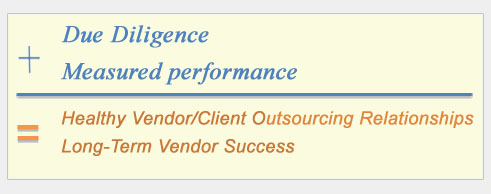What’s wrong with this equation?

In theory, this equation should work. In reality, it often doesn’t add up. In the long run of continued IT outsourcing as well as the implementation of non-technology outsourcing, never have we seen so many concerned customers. There is a disconnect between customer expectations and vendor promises, and the gap is getting worse.
As outsourcing projects have become more niche and more specific, vendors are challenged to cope with significant staffing problems, keeping pace with the phenomenal rate of technological change, and effectively managing growing client demands for immediate results. Clients bring to the fray downsized and overworked staffs, pressure from both top and business unit management to provide value to the IT department’s customers, reduced budgets, and pressure to manage and integrate all new technological advances. Time is scarce, people resources are increasingly over-extended, business demands are unrelenting and the march to reduce costs inexorably increaseing. The confluence of these events can have only one outcome—a tremendous build-up in pressure on all those involved (vendors and customers alike) in the outsourcing process.
So what to do? Clearly, almost all parties involved, i.e., vendors, clients, consultants and pundits have a vested interest in the success of this industry. Despite significant faults, outsourcing is here to stay as a business tactic. It’s become a part of the current economic model in which companies will invest in core competencies and attempt to divest commodity-like operations.
For those of you, who wish the ‘magic bullet’ simplistic answer that makes the outsourcing equation work, forget it. Rather, we think much of the answer lies in the better application of business fundamentals. For example, there should never be an outsourcing decision in advance of a due diligence process. Team building is great for the decision making process as long as it includes an active champion from top management as well as input from affected business unit customers. Human resource considerations should never be treated in a token fashion. An intelligent agreement must include an in-depth scope of work as well as all relevant SLAs. Performance post-contract must be measured. A Program Office, governing the contract on an ongoing basis, must be implemented.
These are but a few of the maxims that experience has taught us at TBI. There are obviously many more. So let me suggest a new equation for our industry’s consideration:


